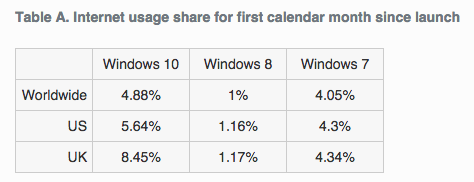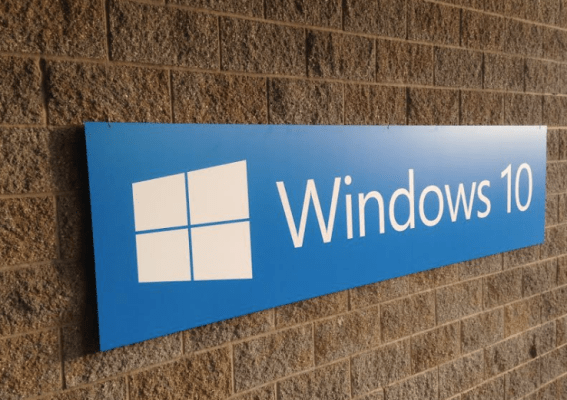Windows 10 has completed a full month in the market following its formal release, meaning that we have new data to parse regarding its in-market performance.
There are several figures to consider: Adoption by gamers, a power-user subset; usage share, as measured by StatCounter; and market share from NetMarketShare.
Gamers
Steam, the popular gaming service, tracks the sort of systems that its users employ to play different titles. Windows is, unsurprisingly, far and away the market share leader on Steam, controlling a fat 95.76 percent in August. In that month, Windows 10’s two versions grew to just over 17 percent share. That figure was up 13.68 percent compared to July’s figures.
The data looks like this:

Also notable in that chart is where Windows 10’s new market share is coming from: Windows 8.1 and Windows 7, but more from the former than the latter. Given how much share the two operating systems control among gamers, it isn’t hard to presume that Windows 10 has a few more months of rapid growth ahead of it among the gaming niche.
Summary: Gamers require their machines to function at a high level. If they adopt Windows 10 quickly, and stay on the operating system, the implication will be that the code is sturdy enough for heavy daily use.
Usage
The fine folks over at StatCounter released data regarding Windows 10’s performance in the market during its first full month, August. Here’s the core chart:

Most importantly, Windows 10 has beaten the pants off the release of Windows 8. Given the disparate quality-at-launch of each operating system, the fact is not surprising. But it does mean that Microsoft, at least, is off to a better start than in its last cycle.
That Windows 10 beat Windows 7’s usage numbers is also not surprising. As we saw in our prior chart, Windows 10 is pulling heavily from two different pools of users; Windows 8’s unpopularity, therefore, is an accelerant for Windows 10.
Summary: Using one historical lens, Windows 10 is performing well, and perhaps even strongly, in terms of driving use.
Market Share
Finally, classic market share. According to the venerable NetMarketShare, Windows 10’s global share of PCs shot from 0.39 percent in July, to 5.21 percent in August. That’s a larger jump than I expected. Microsoft recently disclosed that Windows 10 is currently running on 75 million devices.
Of course, if Windows 10 is stealing market share, it’s taking it largely from other Windows versions. As VentureBeat’s Emil Protalinski noted in a recent article:
Unsurprisingly, Windows 10’s predecessors aren’t doing so well. Windows 8 slipped 0.21 percentage points to 2.56 percent, while Windows 8.1 fell 1.71 points to 11.39 percent. Together, they owned 13.95 percent of the market at the end of August, down from 15.86 percent at the end of July. The duo never even passed the 20 percent market share mark (they peaked at 16.45 percent in May), and with Windows 10 now available, they never will.
Summary: A strong start for Windows 10, but pent-up demand doesn’t last as a source of kinetic energy. More data in a month will be illustrative.
—
So, that’s the latest pulse from Windows 10. What we need now is a whack of data concerning the Microsoft Store’s performance on the new platform.
